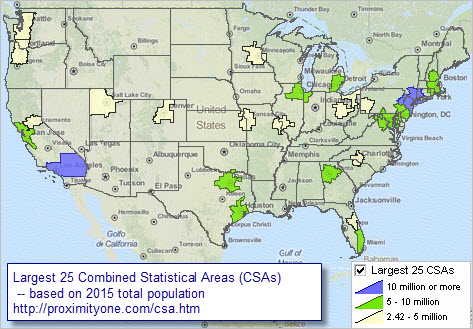Organized on a state-by-state basis, use tools and geographic, demographic and economic data resources in these sections to facilitate planning and analysis. Updated frequently, these sections provide a unique means to access to multi-sourced data to develop insights into patterns, characteristics and trends on wide-ranging issues. Bookmark the related main Web page; keep up-to-date.
Using these Resources
Knowing “where we are” and “how things have changed” are key factors in knowing about the where, when and how of future change — and how that change might impact you. There are many sources of this knowledge. Often the required data do not knit together in an ideal manner. Key data are available for different types of geography, become available at different points in time and are often not the perfect subject matter. These sections provide access to relevant data and a means to consume the data more effectively than might otherwise be possible. Use these data, tools and resources in combination with other data to perform wide-ranging data analytics. See examples.
Select a State/Area
Topics for each State — with drill-down to census block
• Visual pattern analysis tools … using GIS resources
• Digital Map Database
• Situation & Outlook
• Metropolitan Areas
• Congressional Districts
• Counties
• Cities/Places
• Census Tracts
• ZIP Code Areas
• K-12 Education, Schools & School Districts
• Block Groups
• Census Blocks
Join me in a Data Analytics Lab session to discuss more details about accessing and using wide-ranging demographic-economic data and data analytics. Learn more about using these data for areas and applications of interest.
About the Author
— Warren Glimpse is former senior Census Bureau statistician responsible for innovative data access and use operations. He is also the former associate director of the U.S. Office of Federal Statistical Policy and Standards for data access and use. He has more than 20 years of experience in the private sector developing data resources and tools for integration and analysis of geographic, demographic, economic and business data. Contact Warren. Join Warren on LinkedIn.








 ..
.. 


